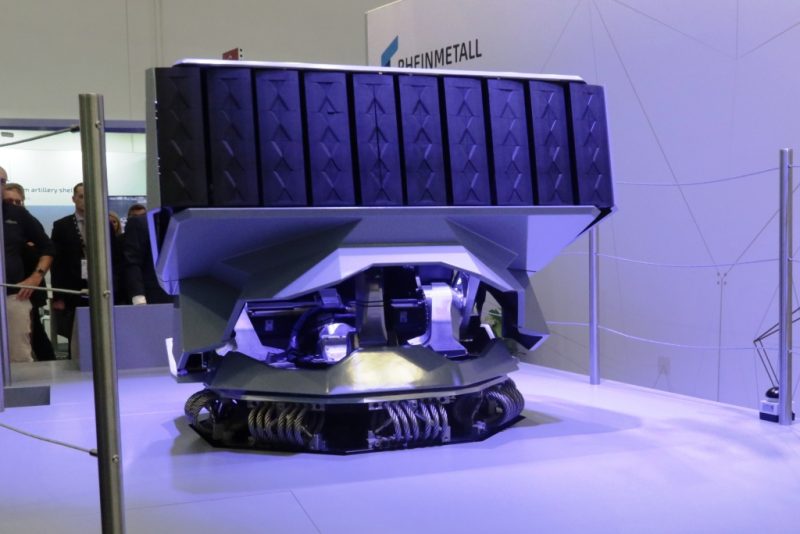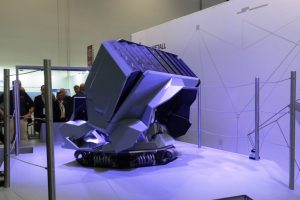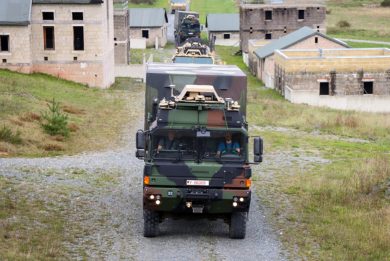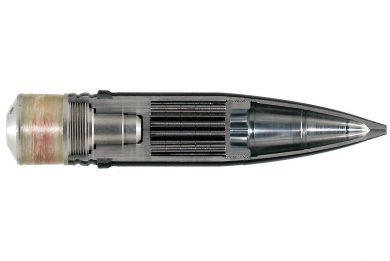DSEI 2025 – MASS nova, the Rheinmetall answer to smarter antiship missiles
The MASS ship protection system, the acronym standing for Multi Ammunition Softkill System, has been around for over 25 years and is protecting the ships of several navies. Confronted to smarter antiship missiles, the system needed a successor, which was unveiled by the Düsseldorf-based group at DSEI 2025: the MASS nova
Today the cloud of reflective material generated by chaff systems such as the MASS are no more sufficient to lure smart antiship missiles; artificial intelligence algorithms are now a common element that give those effectors a more and more precise identification capability, and it is therefore increasingly difficult to deviate them from their actual target, the ship. To cope with this problem Rheinmetall has launched the development of the successor of the MASS and that of new decoys, with the aim of generating not a generic cloud, but something that resembles more and more to the real target.
Considering the wide spread of its MASS, the company invested in what might become a second success story in the area of naval decoys, considering that over 400 MASS launchers have been sold, the system being deployed on more than 50 different classes of ships, and is in service with 60 navies worldwide, and the number is still increasing, Rheinmetall officials underlined.
The MASS nova is being developed by the Business Unit Protection System, one of the four Rheinmetall BUs, on company funds. The first element of the new system is the launcher. Compared to the legacy model, the new launcher, which is fully trainable on 360° in azimuth and 90° in elevation, hosts a higher number of decoys 40 versus 32, as it hosts 10 magazines instead of eight. Not only, these are longer; while maintaining the 81 mm calibre to allow full compatibility with existing decoys, the new launcher can host effectors which are 80 mm longer, which means that the effective mass of the countermeasure content is greater, the single round being therefore more effective. The new launcher has a wholly new design, as it fan angle is variable, maximum over 90°, which allows to launch a number of decoys with variable dispersion, depending on the need, optimising performances against IIR (Imaging InfraRed) and laser guided missiles, Rheinmetall explained. “All in all, we have 50% more payload but with a lighter launcher,” Rheinmetall representatives underlined. Angular speed remains similar to that of the original MASS launcher, but the launcher could be seen moving according to different, simplified kinematics, to reach the optimal launch position, ensuring full screening of the vessel.
However, the main revolution comes from a wholly new type of decoy, which could be seen hanging over the launcher. Named 3DDS, for 3D Decoy Swarm, this is in fact a drone. Before launch it has a tubular shape, similar to that of the other decoys. A recess front and rear hosts four arms carrying each a two-blade rotor, which deploy after launch transforming the decoy in a drone. A swarm of 3DDS is launched when the threat is detected and it is confirmed that it is possibly an effector with radar terminal guidance. Programmed before launch, a two-way link is available, these fly out and fly in a formation that in the “eyes” of the enemy missile will mimic the shape of the ship superstructure, at distance from the real target. Replicating the 3D shape will attract even the smarter missiles of the current and possibly future generation. The 3DDS have an endurance of one to two minutes, well enough to distract the incoming missile from the real target. “all radar hotspots and radar reflecting surfaces will be simulated by the drone swarm. After the formation is done, the decoy swarm separates from the ship, and following pre-programmed waypoints will reach the optimal seduction point,” Rheinmetall explained. The number of decoys needed varies according to the ship size, three-four being sufficient to simulate a patrol boat or small corvette, while for a major combatant such as a frigate eight to 10 will be needed. 3DDS decoys were developed by the Düsseldorf Rheinmetall Technology Centre, the radar decoy materiel being provided by a third party. Rheinmetall is considering as option the addition of active radiation to the decoy, in order to attract anti-radar missiles.
EDR On-Line understood that the 3DDS drones are fully qualified. New infrared payloads are being developed, soot, glass beads, brass dust, a new generation of longer MASS rounds being also underway. According to information gathered at DSEI, Rheinmetall is combining infrared and millimetre wave decoy materiel in a single ammunition, thanks to the increased volume available.
No precise dimensions and mass data were provided for the launcher, as this is still under development, therefore some changing might still occur. Rheinmetall is planning first firing trials in November this year, with the aim of completing qualification by 2027 and have the MASS nova available on the market in 2028.
Photos by P. Valpolini





